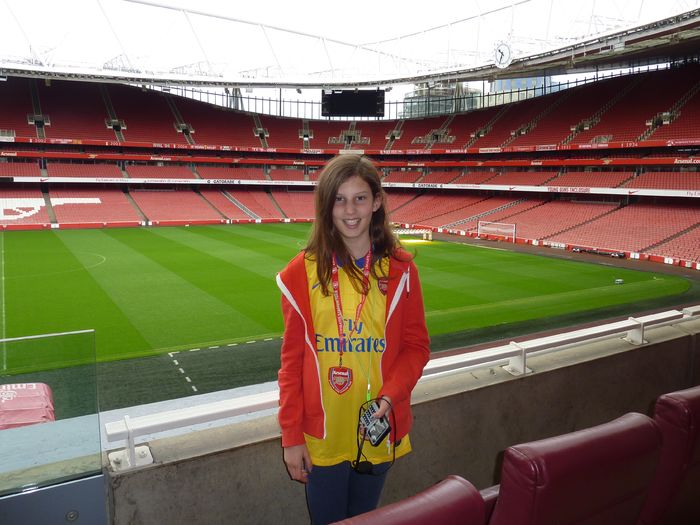Varsity’s guide to the women’s World Cup
Jumped on the bandwagon since the Euros win? Embarrassed that you can’t name a single women’s player? Varsity is here to save your blushes and educate you about the tournament Down Under.

When, what, how?
The women’s football World Cup is taking place in Australia and New Zealand from the 20th of July to the 20th of August. Matches will be broadcast on both ITV and the BBC.
State of play
This World Cup takes place at a time of boom in women’s football. In Europe, media coverage and attendances have increased dramatically in recent years, and the Euros successfully boosted the game’s popularity in England, Germany and Spain. Across the rest of the world the picture is more mixed – but growing professional leagues in Chile, Brazil and South Africa are improving matters.
Runners and Riders
The defending champions are the USA. They have won four World Cups and are currently ranked as the world’s best team by FIFA. They’re strong and fast, but their time in the ascendancy may be coming to an end. They’ve lost to England, Germany and Spain in the last year. While this might be reflective of the fact that they’re a young side in transition, there are deeper tactical reasons for their (relative) plight. The US play in what might charitably be described as a direct style. In more basic terms, they do a lot of hoofing the ball up to their fast and technically gifted wingers and centre-forwards. This has worked for them so far, but their less technical midfield play might cause them problems against European sides featuring such midfield maestros as Keira Walsh, Lena Oberdorf and Alexia Putellas.
Spain are another side to look out for. Happily, for the armchair expert, they play quality passing football and have lots of excellent players from Barcelona, making them prime suspects for a rehash of all the opinions you had about that Spain side from 2008 to 2012. With a side bolstered by the return of most of its key players after the end of a dispute with the head coach and the Spanish FA, they are also the thinking woman’s choice.
Finally, there’s the Germans. Twice world cup champions, runners up in last year’s Euros, and full of experience, they will be hoping that captain and star striker Alexandra Popp can replicate her excellent form from that near-success. If she can, there’s no reason why they can’t upset the Americans come the semifinals.
How will England do?
If your only experience of women’s football was last year’s Euros, you might think that England have their best chance of winning the World Cup in years. Sarina Wiegman’s side have since beaten the US, and South American champions Brazil. However, they have also suffered the worst luck of any major side in the entire tournament. They have suffered serious knee injuries throughout the side, depriving them of their captain and centre-half Leah Williamson, midfielder Fran Kirby and star forward Beth Mead, who won the golden boot last summer. England are still a force to be reckoned with, though. They are full of Blackburn-based quality in midfield, and have two proven goalscorers in Alessia Russo and Rachel Daly up top. Their main problem is in defence; Millie Bright will captain the side in Australia, but she is on her way back from a knee operation. England also have a problem at left-back. Both Daly and Alex Greenwood now play different positions, leaving the (internationally) inexperienced Jess Carter and Niamh Charles to fight it out. Whether they have enough quality to deal with their opponents remains to be seen.
Players to watch
Sophia Smith (USA): The American wunderkind comes into the tournament of the back of winning Player of the Year in the NWSL. Lightning quick, and a good finisher, she loves a ball in behind the defence but also presses well from the front. If she is on form, the US should do well.
Lena Oberdorf (Germany): Germany’s tough tackling defensive midfielder is just 21 but at her second World Cup. Her disruptive style of play and tactical knowledge will be key if Germany are to climb higher this year.
Alexia Putellas (Spain): Back from an ACL injury which she sustained on the eve of last year’s Euros, Putellas has barely played any football for a year. If she can replicate some of the form which won her the Ballon d’Or, then Spain might be in with a chance.
Rafaelle Souza (Brazil): A technically gifted centre-half who’s just left Arsenal, Souza can use her experience of both the WSL and the NWSL to stop their attackers, and create opportunities for Brazil.
Georgia Stanway (England): England’s dynamic midfielder will be crucial for them as a No 8 in Fran Kirby’s absence. If she can stay out of the referee’s book, then she should be influential at both ends of the pitch.
 News / Cambridge student numbers fall amid nationwide decline14 April 2025
News / Cambridge student numbers fall amid nationwide decline14 April 2025 News / Greenwich House occupiers miss deadline to respond to University legal action15 April 2025
News / Greenwich House occupiers miss deadline to respond to University legal action15 April 2025 Comment / The Cambridge workload prioritises quantity over quality 16 April 2025
Comment / The Cambridge workload prioritises quantity over quality 16 April 2025 Comment / Cambridge’s tourism risks commodifying students18 April 2025
Comment / Cambridge’s tourism risks commodifying students18 April 2025 Sport / Cambridge celebrate clean sweep at Boat Race 202514 April 2025
Sport / Cambridge celebrate clean sweep at Boat Race 202514 April 2025





